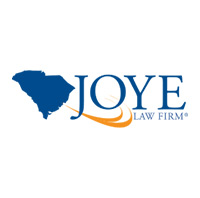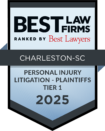According to the National Fire Protection Association, someone in the U.S. is burned seriously enough to require treatment roughly every 60 seconds.
Burn injuries are one of the leading causes of accidental injury and death in the U.S., especially among children. In fact, burns are the 5th leading cause of accidental death for children under the age of 5, and the 3rd leading cause of accidental death for children under the age of 10.
Because burns are so unfortunately common, it’s important to know how they occur, and what to do when they happen.
Common Causes of Burn Injuries
While most people picture house fires when they hear the term “burn injuries,” there are many different ways that people can suffer from burn injuries, including:
- Contact with flame
- Scalding injuries from hot liquid or steam
- Thermal burns from hot glass, metal, or other objects
- Electrical burns from faulty electrical wiring, outlets, or other electrical components
- Chemical burns, such as from chlorine, bleach, or battery acid
- Radiation burns, such as from defective medical equipment like x-ray machines and cancer therapy equipment, or tanning beds
- Smoke inhalation, which can occur even without direct exposure to heat sources
How to Treat a Burn Immediately
Burns are almost always extremely painful, and when left untreated, can also easily become infected. That’s why it’s so important to treat them right away.
First aid for burns may vary slightly depending on how the burn was received.
For Thermal Burns (including fire and scalding injuries)
- Stop contact with/remove the heat source.
- Remove clothing or accessories near the burned area, as burns can swell rapidly.
- Hold the burned area under cool (not cold!) water or apply a cool compress. DO NOT apply ice.
- DO NOT apply any butter, lotions, or creams to the affected area! This can trap the heat inside the skin.
- Loosely cover the burned area with sterile gauze or clean cloth, and secure with tape. Do not use anything with large or loose fibers, because they can stick to the burn. Tying the bandage too tightly can also cut off circulation if the burn swells. This also applies to other types of burns as well.
For Electrical Burns
- Unplug or turn off the source of electricity, if it’s safe to do so. If it’s not possible to do so without risking electrocution, use a tool made of a dry, non-conductive material (such as a wooden broom handle) to push the victim out of contact with the source of electricity.
- If the victim is unresponsive, begin CPR.
- If/once the victim is responsive, loosely cover the burned area with sterile gauze or clean cloth, and secure with tape.
- Apply a blanket to prevent the victim from becoming chilled.
For Chemical Burns
- Gently wash the chemical off the affected area with cool running water for a minimum of 20 minutes. If the burning sensation continues, rinse the area for longer. Don’t allow the run-off to wash over other parts of the body.
- As you rinse, not before, remove clothing or accessories that may have been contaminated with the chemical.
- Loosely cover the burned area with sterile gauze or clean cloth, and secure with tape.
Typically only first-degree burns can be treated at home. Second-degree burns may require antibiotics or ointments that can only be prescribed by a doctor, while third-degree burns may require skin grafts and IV fluids. Your doctor may also recommend receiving a tetanus shot after suffering a burn injury.
When to See a Doctor
Call 911 if any of the following circumstances apply after a burn injury:
- The burned area includes the hands, feet, face, groin, or a major joint.
- It’s a chemical or electrical burn.
- The victim is a child or an elderly person.
- The victim has trouble breathing.
- The burned area appears leathery.
- The burned area turns white, brown, or black.
- The burn blister oozes or is larger than two inches across.
- There are signs of infection, such as redness and fever.
When to Call a Lawyer
If you were burned through someone else’s negligence, you may be eligible for compensation. Because there are so many different ways someone can suffer a burn injury, there are also many parties who may be responsible, including property owners, employers, and manufacturers.
If you are unsure whether you can get compensation for your burns, contact our team today to speak to a burn injury lawyer and discuss the circumstances of your case for free.
How to Reduce Your Risk of Burn Injuries
- Don’t leave sources of heat or flame, such as candles, curling irons, or space heaters, turned on unsupervised.
- Secure all chemicals, including household cleaners, in their original containers and place them in locked cabinets when not in use.
- Only use chemicals in a well-ventilated area while wearing clothing that covers your skin.
- Install anti-scald devices on tub faucets and shower heads.
- Never use power cords that are cracked or have bare or fraying wire.
- Have unusually warm light switches or power outlets inspected by an electrician.
- Never have more than one heat-producing appliance plugged into the same outlet at the same time.

































